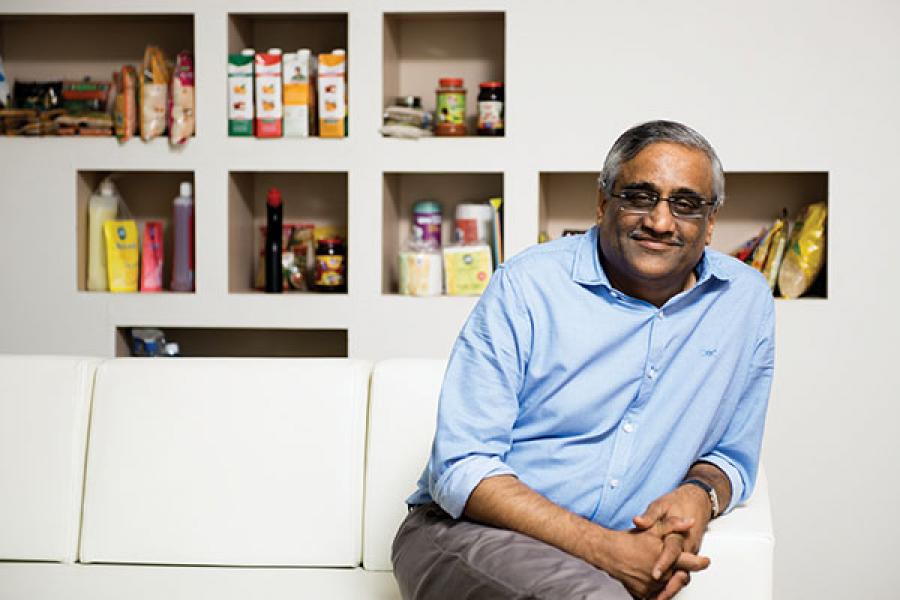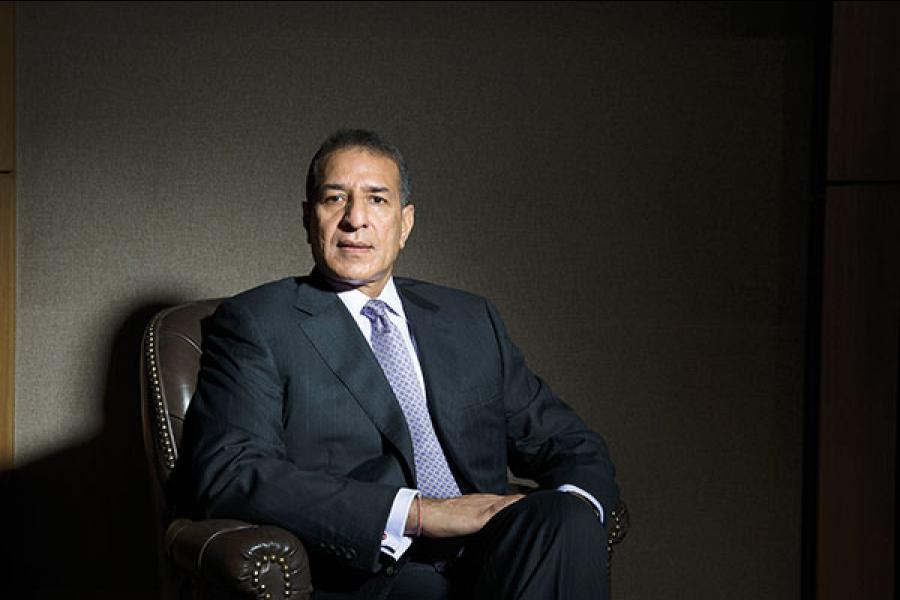
Biyani-Mittal deal: The power of two
The Biyani-Mittal deal is a sign of things to come in the retail sector: Consolidate to grow or, at least, survive
On the last Sunday of January, Vedanta boss Anil Agarwal played host to old friends at his house in London’s Mayfair neighbourhood. There were the Mittal brothers (Rajan and Sunil) of Bharti Enterprises who had made a stop on their way to the World Economic Forum at Davos. Also present was Kishore Biyani (related to Agarwal through marriage) of Future Group. The meeting had been called by Agarwal who had wanted to bring them together to discuss the possibility of doing business.
The Mittals and Biyani began to talk about how their retail companies could work together. Talks were preliminary and revolved around how the retail sector was shaping up in India, as well as the threat from ecommerce, which is flush with private equity money. Discussions lasted the entire day. “I came away thinking this could result in a deal,” says Biyani, who runs the Rs 15,000-crore Future Group, India’s largest retail chain.
But Bharti’s foray into retail was fraught with concerns. As Rajan explains in a phone interview, “Unlike telecom, the structural issues for high growth were missing in the retail industry.” He points to problems with real estate, taxation, human resources and capital. The net result: Bharti, which had been plugging away at this business for a little under a decade (first with Walmart and then alone), had Rs 2,500 crore in revenue to show for it. In contrast, its two-decade-old telecom business had scaled to Rs 85,000 crore. The Mittals believed they were better off finding a partner.
Meanwhile Biyani, who had spent the last three years pruning his debt, had recently started building his next pillar of growth—the small store. In December 2014, he acquired South Indian supermarket chain Nilgiris, adding 140 stores to his portfolio. Just over a month later, Bharti presented a potential target, with a portfolio of 200 neighbourhood stores that could fit well in his plan. There was only one thing he couldn’t do: Pay cash for the deal and be saddled with more debt. As a solution, over the next three months, Rajan and Biyani would negotiate an all-stock deal.
The deal, finally announced on May 4 in Delhi, signalled a consolidation in the retail business that many analysts had been expecting. “Companies had entered the retail business with different objectives. For some it was a chance to sell to a foreign partner. With multi-brand FDI stalled, it is hardly surprising that such deals are taking place,” says Harish HV, partner at Grant Thornton India.
In a sign of the times, just a day before the Mittal-Biyani deal was announced, the retail sector saw another merger: Aditya Birla Group announced a Rs 12,000-crore merger of Pantaloons Fashion & Retail with Madura Garments to create Aditya Birla Fashion & Retail Ltd.
It wasn’t just Mittal who had had a tough time in the retail sector; Biyani too has had a challenging time over the last three years. His breakneck expansion of stores in the years leading to the global financial meltdown of 2008 had burdened him with a crushing debt load. By 2012, a debt of Rs 9,000 crore meant his interest payments were severely denting his profitability; a business with sales of Rs 15,000 crore was making under Rs 500 crore in profit. That left him with no money to fund further expansion, which had continued to be his strategy.
Biyani had little choice but to reorganise his business. Pantaloons was sold to Kumar Mangalam Birla’s Aditya Birla Group (in April 2012), while Future Capital was sold to Warburg Pincus in May 2012. He separated his apparel division from his hypermarket stores and listed the two separately as Future Lifestyle Fashion and Future Retail respectively.
At the same time, Future Group was also working hard to increase margins by adding private labels and selling more apparel at its hypermarkets. This has led to margins going up by around 3 percent over the last three years. “We never looked at measures like return on capital earlier,” says Biyani. Now, Future Group won’t open a store unless they can get a 25 percent internal rate of return.
This is a far cry from the days when the group would set up a store based on mere instinct. Biyani has evolved from being a gut-driven entrepreneur to one who spends time understanding the science of retail. For instance, in the last five years, Future Group has significantly enhanced its back-end. Its sourcing of fruits and vegetables is now second to none, say experts. With 180 Big Bazaar hypermarkets across the country, it has a significant lead over rival Reliance Retail (a subsidiary company of Reliance Industries, which owns Network 18, publisher of Forbes India). Other rivals like Aditya Birla Group’s More and Sanjiv Goenka’s Spencer’s haven’t managed to scale up quite as aggressively.
Not surprisingly, when you meet the 54-year-old Biyani, there is a discernible spring in his step. But there is no complacence. Instead, he is focussed on the sales target of Rs 1 lakh crore by 2020 that he has set for his company. With the Bharti deal, this target has become a lot easier to meet, he admits.
When Forbes India spoke to him in December 2014, he had spoken about his plans to double down on a brick-and-mortar-cum-ecommerce strategy: The 5,000 sq ft neighbourhood store would be his next engine of growth, buttressing the 50,000 sq ft-plus hypermarkets. Future Group plans to set up 4,000 of the smaller store in various parts of India in the next five years; they have 500 at present. It also intends to adopt a cluster approach—setting up stores region-wise—in order to manage supply chain costs.
The deal with Bharti Retail takes Future Group closer to each of these targets. And though it is being termed a merger, the deal is essentially a takeover.
Let’s run through the numbers first. Here’s what Future Group acquires: 20 Easyday hypermarkets that will be rebranded Big Bazaar, taking the total Big Bazaar count to 200 across India; smaller format Easyday stores—in Punjab, western Uttar Pradesh and Delhi, where Future Group has few neighbourhood stores—will retain their branding. The two formats combined will add Rs 2,500 crore to Future Group’s top line.
Bharti Retail and Future Retail will be combined, with Bharti getting a 9 to 10 percent stake in the two new entities created—one to manage the front-end in the stores and the other to handle the logistics and back-end. Bharti will also be issued Rs 250 crore of optionally convertible debentures, with the option of converting them into equity in 18 months, for the front-end company. Bharti will also get a seat on the boards of both the companies.
While there was little doubt about the sense in joining forces, it was during the three months leading up to the announcement of the deal that Biyani received some well-intentioned advice from the Mittals. “The telecom business showed us that it is best to keep the infrastructure out of the main company,” says Rajan. Applying that analogy to retail, they suggested that the back-end be hived off into a separate company. “Our idea was to put the back-end into a company that specialises in, and creates, world class infrastructure.”
This was also a sound call from a financial perspective.
Biyani has proven that his margin model is world class: Higher-margin apparels constitute 55 percent of sales, the balance accounted for by lower-margin food products. Globally, higher-margin apparels contribute no more than 40 percent to sales.
Despite that, working capital availability can often pose a problem in the retail business as credit periods from suppliers are often not long enough. In the new structure, the front-end company will have a much lighter debt load of about Rs 1,000 crore. With lesser money going towards interest costs, the front-end business should find it easier to be profitable. In the past, Future Group found it difficult to raise low-cost debt as the business had few assets to show as collateral. Now, most of the debt—around Rs 3,000 crore—will reside with the back-end company, which will have all the infrastructure and assets on its books, as well as a more stable and predictable margin and business model. In time, Biyani could even throw its services open to other retailers. “This gives us the opportunity to bring in two different sets of investors into the company,” he says.
In addition, the smaller stores acquired by Future Group are more efficient in per-square-feet sales. This is partly achieved by ensuring better on-shelf availability in stores. Bharti’s and Nilgiris’s small stores have average sales of Rs 2,500 per square feet; Future Group’s average is Rs 1,800 per square feet. “Bharti Easyday stores are created on a perfect planogram. They have 93 percent on-shelf availability, which is higher than ours,” says Biyani.
In Bharti, he also has a trusted ally whose business model and culture he looks up to. Future Group executives were surprised to see that many of the systems and processes—for instance, the focus on on-shelf availability—that Walmart left behind are still followed diligently. Biyani is looking to inculcate that culture within his team.
Biyani believes he’s got the building blocks in place for the next decade of growth. Sure, the last couple of years have been tough; some of his trusted lieutenants have left him for rivals, but he scoffs at the notion that he’s lost significant talent. “If you don’t change your company how will you evolve, how will your thoughts change?” he asks. And, in a way, he is following his own advice.
(This story appears in the 12 June, 2015 issue of Forbes India. To visit our Archives, click here.)

















